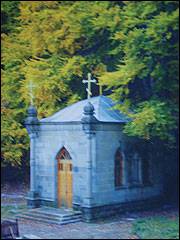Monastery of Sts. Cosmas and Damian in Crimea
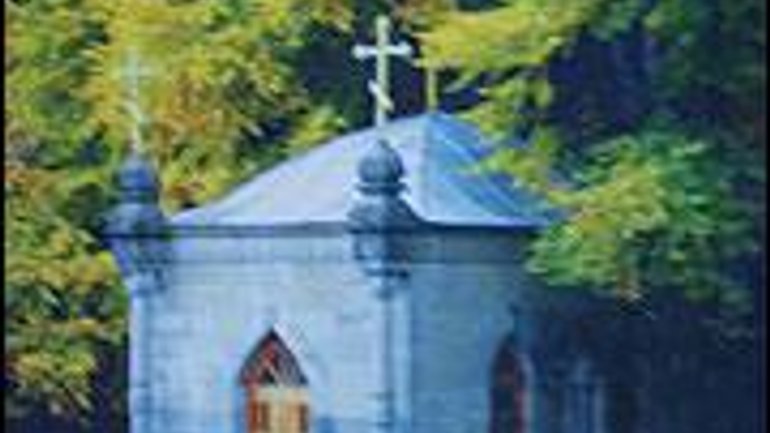
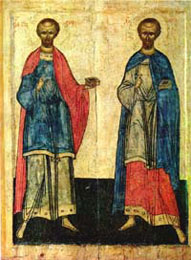 According to legend, Cosmas and Damian were exiled to Tauria, now part of Crimea, during the persecutions of Christians in Rome in the 3rd century. In Crimea, the saints found a healing spring and began to treat people with its water. Later, the source with the healing water was given the name “Savlukh-Su,” which in Turkic means “water which heals.” The water of the source still improves many people’s health. Modern scientists have found in it ions of silver in a concentration sufficient for treatment. Thanks to the particles of silver, it does not lose its healing properties even if kept in a container for a long time.
According to legend, Cosmas and Damian were exiled to Tauria, now part of Crimea, during the persecutions of Christians in Rome in the 3rd century. In Crimea, the saints found a healing spring and began to treat people with its water. Later, the source with the healing water was given the name “Savlukh-Su,” which in Turkic means “water which heals.” The water of the source still improves many people’s health. Modern scientists have found in it ions of silver in a concentration sufficient for treatment. Thanks to the particles of silver, it does not lose its healing properties even if kept in a container for a long time.
The Monastery of Sts. Cosmas and Damian is located in an almost inaccessible place. It is closely surrounded with high mountains which stand in the way of the bright Crimean sunshine even in summer and make the light of day considerably shorter. In winter, when crossings and mountain roads are covered with deep snow, the monks often feel like recluses here. One has to receive a special permit from the workers of the Crimean State Reserve to get to the monastery.
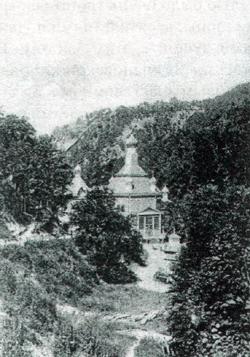 he history of the monastery began in the 1850s, when the Synod of the Russian Orthodox Church decreed to establish a kinovia [a kind of monastery] in the place where the holy doctors Cosmas and Damian treated people with the healing water. In 1857, a church was built, and in September of that year Priest-Monk Makarii was appointed the first ihumen (abbot) of the Kinovia of Sts. Cosmas and Damian. He was the ihumen of the monastery for over 30 years. The construction was carried out in extremely difficult conditions. Little by little, the monks took territory for the construction of the church and house from the mountains and woods. They did most of the work themselves. Priest-Monk Makarii was an example to the brothers not only in prayer, but also in hard work. On 1 July 1862, parts of the holy remains of Saints Cosmas and Damian were incorporated in the iconostasis of the church.
he history of the monastery began in the 1850s, when the Synod of the Russian Orthodox Church decreed to establish a kinovia [a kind of monastery] in the place where the holy doctors Cosmas and Damian treated people with the healing water. In 1857, a church was built, and in September of that year Priest-Monk Makarii was appointed the first ihumen (abbot) of the Kinovia of Sts. Cosmas and Damian. He was the ihumen of the monastery for over 30 years. The construction was carried out in extremely difficult conditions. Little by little, the monks took territory for the construction of the church and house from the mountains and woods. They did most of the work themselves. Priest-Monk Makarii was an example to the brothers not only in prayer, but also in hard work. On 1 July 1862, parts of the holy remains of Saints Cosmas and Damian were incorporated in the iconostasis of the church.
In 1873 and 1880, the future Russian tsar Alexander III visited the Monastery of Sts. Cosmas and Damian. The Russian tsars of the Romanov dynasty liked to rest in Crimea and visited memorable places of the peninsula.
In 1899 it became a women’s monastery. This gave a positive impetus to monastic life. The number of nuns was considerably increased then, workshops were organized. The monastery gave shelter to pilgrims and educated girls. In February, 1907, a branch of the monastery was opened in Simferopol.
In 1913, a chapel was built over the spring in honor of the 300th anniversary of the Romanov dynasty. The chapel is actually the only remaining building which survived the atheist times of trouble. In 1923 the monastery was liquidated. Today, the building is not in the best condition, but services are celebrated in it. The fact that the monastery is located on the territory of the reserve creates great difficulties even in making repairs, not to mention new construction.
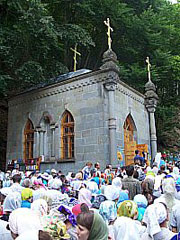 The modern history of the Monastery of Sts. Cosmas and Damian began in 1992, when the Ukrainian Orthodox Church [-Moscow Patriarchate] made a decision to renew the monastery. In two years, by decision of the president of the Crimean autonomous republic, the buildings and land were given back to the monastery and a branch was opened in the town of Partenit, and later, in 2000, in the village of Izobilne. In May 2001, the remains of the first ihumen, Makarii, who died in September 1878, were reburied in a crypt.
The modern history of the Monastery of Sts. Cosmas and Damian began in 1992, when the Ukrainian Orthodox Church [-Moscow Patriarchate] made a decision to renew the monastery. In two years, by decision of the president of the Crimean autonomous republic, the buildings and land were given back to the monastery and a branch was opened in the town of Partenit, and later, in 2000, in the village of Izobilne. In May 2001, the remains of the first ihumen, Makarii, who died in September 1878, were reburied in a crypt.
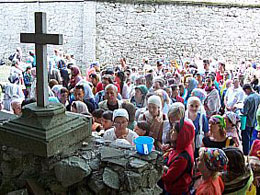 The location of the monastery on the territory of the reserve considerably restricts organization of its farm, which many monasteries customarily operate. In addition to liturgical life, the monks organize delivery of “Savlukh-Su” water to Crimean sanatoriums and manage its bottling. Part of the proceeds are used to renew the monastery. Pilgrims who visit the monastery can douse themselves or plunge into the water, the temperature of which is the same in summer and in winter. Everyone can fill up a bottle of the healing water for themselves. Only part of the water from the source is used for treatment. A large part of the water simply runs into a river. Restrictions are imposed by legislation regarding the protection of the natural environment. Father Yevsevii reports considerable positive changes in the conditions of people suffering from problems of the stomach and intestines, urinary and genital organs, leg, eye and skin, as well as cases of complete recovery thanks to prayer and the healing water.
The location of the monastery on the territory of the reserve considerably restricts organization of its farm, which many monasteries customarily operate. In addition to liturgical life, the monks organize delivery of “Savlukh-Su” water to Crimean sanatoriums and manage its bottling. Part of the proceeds are used to renew the monastery. Pilgrims who visit the monastery can douse themselves or plunge into the water, the temperature of which is the same in summer and in winter. Everyone can fill up a bottle of the healing water for themselves. Only part of the water from the source is used for treatment. A large part of the water simply runs into a river. Restrictions are imposed by legislation regarding the protection of the natural environment. Father Yevsevii reports considerable positive changes in the conditions of people suffering from problems of the stomach and intestines, urinary and genital organs, leg, eye and skin, as well as cases of complete recovery thanks to prayer and the healing water.
For more photos, see:





